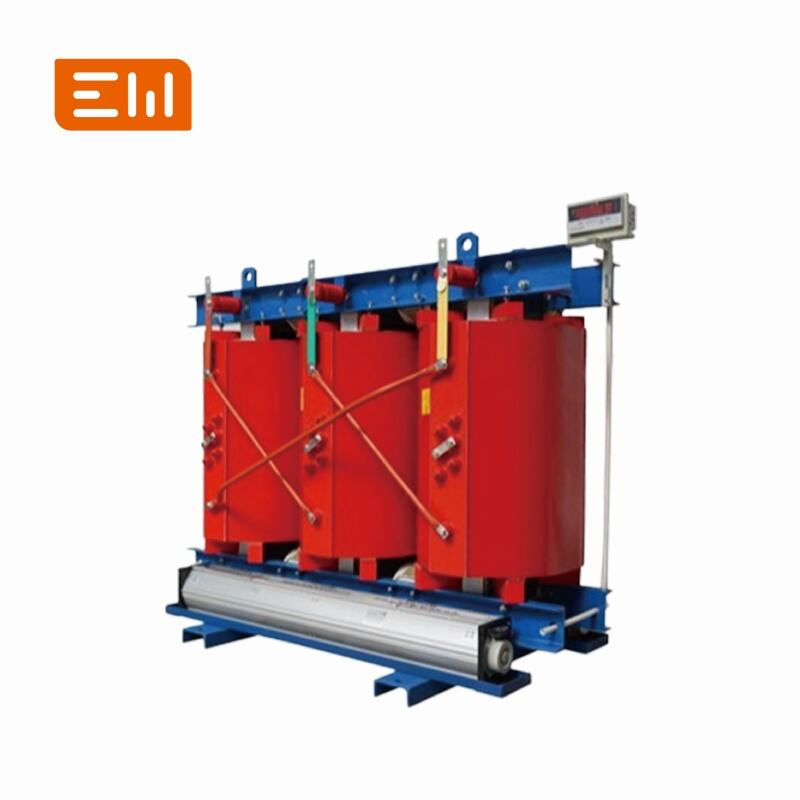Safety First: Essential Precautions for Dry Type Transformers
While dry type transformers are renowned for their inherent safety features, particularly their fire resistance, they are still high-voltage pieces of electrical equipment that demand respect. Adhering to proper safety precautions during installation, operation, and maintenance is crucial to protect personnel from electrical hazards and ensure the transformer's reliable operation.
This guide outlines the most essential safety precautions every technician and facility manager should know.

1. Always Assume it is Energized
This is the golden rule of electrical safety. Never touch or approach a transformer with the assumption that it is turned off. Always treat every electrical circuit as live until it has been properly de-energized, tested, and locked out.
2. Follow Strict Lockout/Tagout (LOTO) Procedures
Before any inspection or maintenance work begins, the transformer must be completely isolated from its power source.
- De-energize: Open the circuit breakers on both the primary (high-voltage) and secondary (low-voltage) sides.
- Lock and Tag: Apply a physical lock and a warning tag to the breakers to prevent anyone from accidentally re-energizing the equipment while work is in progress.
- Verify: Use a properly rated voltage meter to test all terminals and confirm that there is zero voltage present. This is a non-negotiable step.
3. Use Appropriate Personal Protective Equipment (PPE)
All personnel working on or near the transformer must wear the appropriate PPE for the hazards present. This may include:
- Voltage-Rated Gloves: Essential for any potential contact with electrical components.
- Arc Flash Protection: Arc-rated clothing, face shields, or full suits are required when working on energized equipment, with the level of protection determined by an arc flash hazard analysis.
- Safety Glasses and Hard Hats: Standard protection for any work in an industrial or construction environment.
4. Ensure Proper Grounding
Proper equipment grounding is critical for safety. The transformer's enclosure and core must be securely connected to the facility's grounding system. This ensures that in the event of an internal fault, fault current has a safe path to the ground, which will trip the protective devices and prevent the enclosure from becoming dangerously energized.
5. Maintain Adequate Clearance and Ventilation
Transformers generate heat and require space for cooling and safety.
- Working Clearance: Follow all local and national electrical code requirements for minimum working space around the transformer. This provides a safe area for technicians to perform maintenance.
- Ventilation Clearance: Do not obstruct the transformer's cooling vents. Ensure there is adequate space (as specified by the manufacturer) around the top, bottom, and sides for proper air circulation. Blocked ventilation will lead to overheating and failure.
- Keep the Area Clear: The area around the transformer should not be used for storage. Flammable materials, in particular, should never be stored near any electrical equipment.
6. Read and Adhere to the Manufacturer's Manual
Every transformer is unique. The manufacturer's installation and operation manual contains specific information regarding connection torque values, clearance requirements, maintenance procedures, and other critical safety data. Always consult this document before performing any work. For any https://www.enweielectric.com">Enwei Electric transformer, our technical documentation provides comprehensive safety guidelines.
7. Be Aware of Backfeed Potential
Remember that a transformer can be energized from either the primary or the secondary side. In facilities with generators, solar panels, or other alternative power sources, there may be a risk of the transformer being "backfed" from the secondary side even if the primary breaker is open. Ensure all potential power sources are isolated before beginning work.
Conclusion: Safety is Non-Negotiable
While dry type transformers are designed with safety as a top priority, safe work practices are the responsibility of every individual. By fostering a culture of safety and rigorously following these essential precautions, you can prevent accidents, protect personnel, and ensure the long, reliable life of your electrical equipment.
For specific safety questions regarding your transformer, always https://www.enweielectric.com/contact-us">consult with a qualified electrical engineer or contact the manufacturer directly.
Table of Contents
- Safety First: Essential Precautions for Dry Type Transformers
- 1. Always Assume it is Energized
- 2. Follow Strict Lockout/Tagout (LOTO) Procedures
- 3. Use Appropriate Personal Protective Equipment (PPE)
- 4. Ensure Proper Grounding
- 5. Maintain Adequate Clearance and Ventilation
- 6. Read and Adhere to the Manufacturer's Manual
- 7. Be Aware of Backfeed Potential
- Conclusion: Safety is Non-Negotiable

